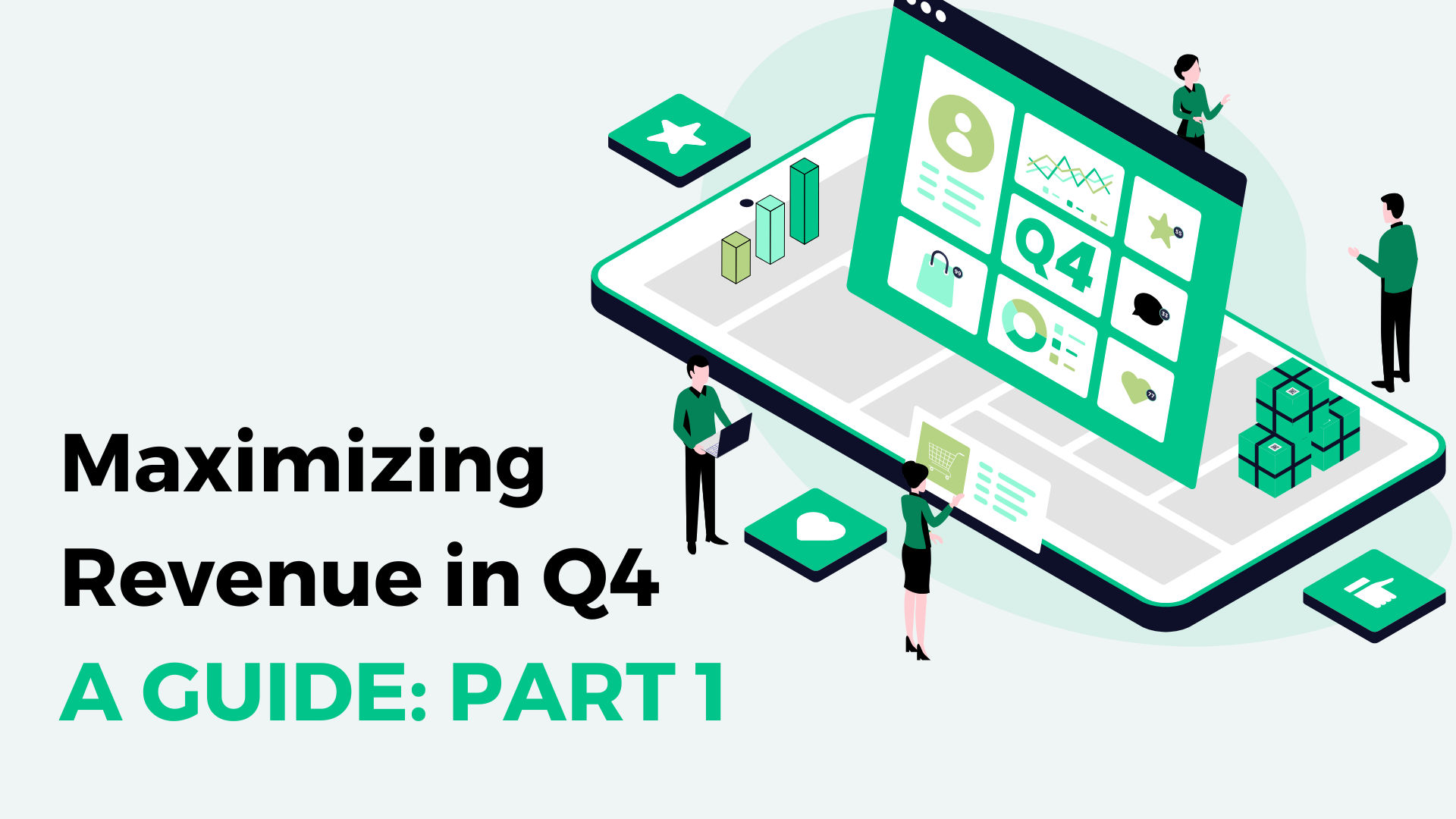You might have heard the term “ad inventory” thrown around in the advertising world, but what does it really mean? In this post, we’ll explore what ad inventory is and discuss the different ways to sell it. Let’s dig in!
What is Ad Inventory?
Essentially, ad inventory is the number of ad spaces or spots a publisher has available for advertisers to place ads. Website publishers and app developers typically control the ad inventory on their platforms. They decide how much space to allocate to ads and where to place them based on their website layout and ad placements.
Publishers also have the final say on which IAB categories and ad formats they want to allow in their inventory. In case you’re curious, the most common ad formats include the following:
- Display Ads – Display ads use images, graphics, and text to promote a product or service. Display ads can take many different forms, including banner ads or pop-up ads. They can be static or dynamic, and can include interactive elements as well.
- Video Ads – Video ads use video content to promote a product or service. They can take many different forms, including instream ads and outstream ads.
- Native Ads – Native ads blend in with the surrounding content on a website or app, creating a more seamless and less intrusive experience for the user. Native ads typically match the look and feel of the website or app in which they are displayed, and are often designed to mimic the style and format of the content.
Advertisers, on the other hand, choose which ad inventory to buy and at what price. They select the target audience for their ads, such as demographics, interests, and browsing behavior. Getting their ads seen by the most people possible is a top priority.
What is Ad Value, and How is it Determined?
For publishers, ad value refers to the benefits and value that publishers receive from displaying advertisements on their website, app, or other digital properties. Publishers can derive value from ads in several ways, including:
- Revenue – Publishers can earn revenue by displaying ads on their digital properties. The amount of revenue they receive depends on factors such as the ad format, the platform or network used, and the number of impressions or clicks generated by the ad.
- Audience Engagement – Advertisements can help to attract and engage users with the your website content, which can increase the time users spend on the site and encourage them to return in the future.
- Data Insights – Publishers can gain valuable insights into their audience through the data generated by ad campaigns, such as user demographics, interests, and behaviors.
- Partner Relationships – Displaying ads from trusted and reputable demand partners can help to establish and maintain relationships with them, which can lead to additional revenue opportunities and collaborations.
The value of ads for publishers can vary depending on a range of factors, including the type and format of ads, the target audience, the platform or network used, and the goals of the publisher. Ultimately, the value of ads for publishers is determined by the degree to which they help to achieve the publisher’s business objectives, such as increasing revenue or building audience engagement.
Premium Advertising Inventory and Remnant Advertising Inventory
Now that you understand ad inventory better let’s talk about the types of ad inventory premium and remnant.
Premium advertising inventory is the most desirable ad space. It tends to have higher engagement rates and is often associated with high-quality content. This could include prime website real estate, sponsorship opportunities, or exclusive video content.
Premium ad inventory is the higher-grade ad space sold to advertisers at a premium rate. These high-quality ad spots usually contain ads from big brands, have more extensive viewership, and are more sought after by buyers. Think front page ads or prime ad spots in popular videos.
On the other hand, ad space that hasn’t sold yet is remnant ad inventory. This space often gets filled with house ads or remnant ads from advertisers willing to pay lower rates. Remnant ad inventory also gets used to test ad campaigns or formats.
Ways to Sell Ad Inventory
Website and app owners have a range of methods to sell their ad space. There are several options available when it comes to earning a profit from your ad space. This section will explore the different ways to sell ad inventory.
- Programmatic Direct – Programmatic direct deals are a type of digital advertising in which a buyer and a seller agree to sell and purchase ad inventory directly from each other, without the need for an intermediary such as an ad exchange. Direct deals give buyers more control and certainty over where their ads will appear and who they will reach so they’re willing to increase the CPM. Deals can run across all ad units, including high-value placements, such as homepage takeovers, interstitial and post-transaction ads.
- Programmatic Guaranteed – Programmatic guaranteed lets the advertiser reserve ad inventory at a guaranteed price and timeframe. Programmatic buying is like direct sales, but the process is more efficient and automated. The price and timeframe are also pre-determined. This is more predictable and efficient for both parties involved.
- Real-Time Bidding (RTB) – Real-Time Bidding (RTB) is where ad inventory gets auctioned to the highest bidder in real-time. RTB is highly automated. Although it can deliver better results for website owners and advertisers, it requires a technical setup and knowledge of the programmatic ecosystem. It’s important to note that RTB depends on the bid value of the inventory. Because of this, it could be a less predictable source of income for publishers.
- Private Marketplace (PMP) – Private Marketplace (PMP) is a method that lets website owners invite specific advertisers to bid on their inventory. It offers more control over the ads on the platform and can increase prices. That said, it can also be less efficient than other methods and may require more resources to manage.
Ad Revenue Model – CPM
There are several different ad revenue models used in online advertising but the most popular model for website monetization is CPM.
CPM stands for “Cost Per Mille” (mille means thousand in Latin), which is a common ad revenue model used in online advertising. With CPM, advertisers pay a fixed rate for every thousand impressions of their ad, regardless of whether the user interacts with the ad or not.
For example, if an advertiser pays a CPM rate of $2 and their ad is displayed 10,000 times, they would pay a total of $20 to the publisher for the ad campaign. The CPM rate can vary widely depending on factors such as the type of ad, the platform or network used..
Website publishers use CPM as an ad revenue model for several reasons, including:
- Predictable Revenue – CPM offers a predictable and consistent revenue stream for publishers, as they are paid a fixed rate for every thousand impressions of the ad. This can be especially beneficial for publishers with a large and consistent audience, as they can estimate their revenue based on the number of impressions they generate.
- Easy to Implement – CPM is a straightforward ad revenue model that is easy to implement and manage for both publishers and advertisers. Publishers simply need to display the ads on their website or app, and they will be paid based on the number of impressions generated.
- Potential for High Revenue – CPM rates can be quite high for publishers with a large and engaged audience, which can generate a significant amount of revenue even if the user interaction with the ad is minimal.
- Brand Awareness – CPM is often used for branding and awareness campaigns, where the goal is to reach as many users as possible with the ad. This can be beneficial for publishers who want to attract advertisers interested in increasing brand awareness rather than generating immediate sales or conversions.
Overall, CPM can be a useful ad revenue model for publishers who want to generate predictable and consistent revenue from their website or app, and who have a large and engaged audience that can generate a high volume of ad impressions.
Key Takeaways
Ad inventory is an essential part of a profitable publisher strategy. There are several ways to sell ad inventory, each with its own advantages and disadvantages.
- Direct Sales offers more control over ad inventory but require a sales team or process in place
- Programmatic Guaranteed allows for efficient ad buying and pre-determined prices
- Real-Time Bidding can result in higher income if bids are high enough
- Private Marketplace offers increased control over ads but may be less efficient than other methods
Ultimately, the right ad inventory model will depend on your website’s traffic, engagement rate, and niche. With these strategies in mind, you should now have all the tools you need to maximize ad revenue for your business. Why not take the next step and find the right ad partner to work with? Get started today!




